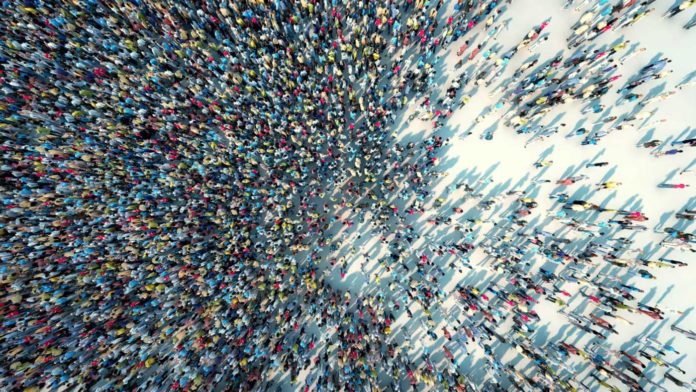The cellular cytoplasm is packed with macromolecules and different species that occupy up to 40% of the accessible volume. Past examinations have announced that for high crowder molecule concentrations, colloidal tracer particles have a dampened diffusion because of the higher solution consistency. Be that as it may, these examinations utilized uniform distributions of crowder molecules.
A new study by the Penn State scientists has suggested that cell particles have rapid movement in a crowded cellular environment when the crowding molecules are non-uniformly distributed. Particle transport in crowded cells can be quicker than movement in a non-crowded condition as long as the particles are moving from thickly crowded areas to less crowded regions.
Ayusman Sen, Verne M. Willaman Professor of Chemistry and distinguished professor of chemistry and chemical engineering at Penn State, and one of the leaders of the research team said, “Crowding is common in living systems at different length scales, from busy hallways down to dense cellular cytoplasm. The insides of cells are very, very crowded with proteins, macromolecules, and organelles.”
“Molecules that are involved in chemical reactions required by the cell must be transported through this crowded, viscous environment to find their partner reagents. If the environment is uniformly crowded, movement slows, but we know that the inside of a cell is non-uniform; there are gradients of macromolecules and other species. So, we were interested in how these gradients would influence transport at the nanoscale.”

During the study, scientists compared the movement of various “tracer” colloids — insoluble particles suspended in a fluid — through different conditions utilizing microfluidics. A microfluidic device can be filled with multiple solutions in which the specialists build up gradients — from high to low — of “crowder” macro-molecules in the fluid. The tracers, which can be huge or small, hard or soft and deformable, are fluorescently labeled, enabling the analysts to follow their development with a confocal microscope.
Farzad Mohajerani, a graduate student in chemical engineering at Penn State and co-first author of the paper said, “We were surprised to see that the tracers moved faster in gradients of crowders than they did through a fluid with no crowders at all. We think that the densely packed crowders put a pressure on the tracers to force them toward less dense areas. Large tracer molecules moved faster than small ones, and soft, deformable tracers moved faster than hard ones.”
Matthew Collins, a graduate student in chemistry at Penn State and co-first author of the paper, said, “The soft, deformable tracers are better representatives of actual species moving around in cells. We think that they can move faster because, unlike hard particles, they can squeeze through tighter areas.”
“Our experiments and model not only show that molecules can move faster through gradients of macromolecular crowding, we think that these rates of movement may increase further inside actual living cells where other active moving molecules could increase the crowding pressure.”
In addition to Sen, Collins, and Mohajerani, the research team at Penn State included Subhadip Ghosh, Rajarshi Guha, Tae-Hee Lee, Peter J. Butler, and Darrel Velegol. The U.S. National Science Foundation funded the research.
